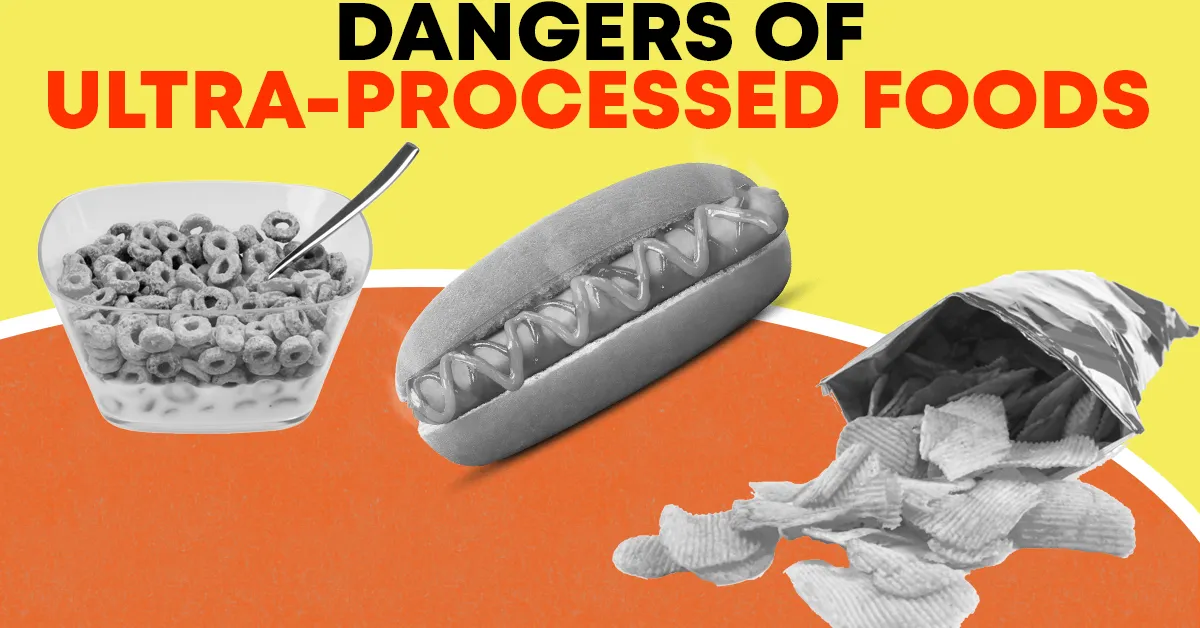Over half of the calories in an average American diet come from ultra-processed foods. In 2003, 51% of American calories were from ultra-processed foods, which increased to 54% by 2018.
Considering that an estimated 73% of food available at American grocery stores is ultra-processed, it is the most prevalent food available to us.
Ultra-processed foods have been available for over 100 years. During the First World War there was a demand for food that could be stored for longer durations without spoiling. This helped drive the innovations that led to trans-fats found in hot dogs and early ultra-processed foods.
Though ultra-processed foods initially began as a small portion of our diets and food found in the grocery store, it has grown significantly in the 21st century.
What is Considered an Ultra-Processed Food?
Ultra-processed foods are a very broad category of food that is packaged and contains several processing steps to be manufactured. This is often noted by the ingredients, which include things like preservatives, gums, fillers, flavors, sugars, salts, and fats.
By comparison, a “processed” food is one where human processing has turned it from one substance into another. Think sugar beets being processed into sugar.
An ultra-processed food would use multiple human-made ingredients and steps to create a new food that is not naturally available, like soda, for example.
It’s important to note that while most “junk food” would be considered ultra-processed food, the words are not interchangeable. There may be junk food that has limited processing, but still qualifies as junk food due to its lack of nutrients.
Why are Ultra-Processed Foods Unhealthy?
People are drawn to ultra-processed foods because they are designed to taste good and last a long time.
They are unhealthy because they are often very high in calories, so it becomes easier to consume more calories than you otherwise would have from a minimally processed food. Because ultra-processed foods are low in nutrients, their calories fill you up, thus deterring you from desiring to eat more nutrient-dense foods.
Besides missed nutrients, a diet high in ultra-processed foods can increase the risk of chronic inflammatory disease. Additionally, many ultra-processed foods are prominent sources of trans fats, which pose health complications.
A 2019 study compared two groups of adults for 14 days. They ate a diet of strictly ultra-processed foods or unprocessed foods. The group eating ultra-processed foods gained 2 pounds while the group eating the unprocessed foods lost 2 pounds on average.
How Can You Limit Ultra-Processed Foods?
It may not be immediately obvious to you which foods are ultra-processed foods in your diet. Generally, the more ingredients it has, the more likely it is ultra-processed and long removed from any natural state.
NOVA is a food classification system used by the World Health Organization that categorizes food by how processed they are. They have a great document on what foods should be avoided.
Besides watching ingredients, it is generally healthier to cook your own food at home. Rather than eating ready-made food at home, find recipes to make food with fresh ingredients. This way, you know what goes into your food.
If you are looking for ways to eat and live healthier, learn more about the Weight Wellness Journey program at Integracare!


